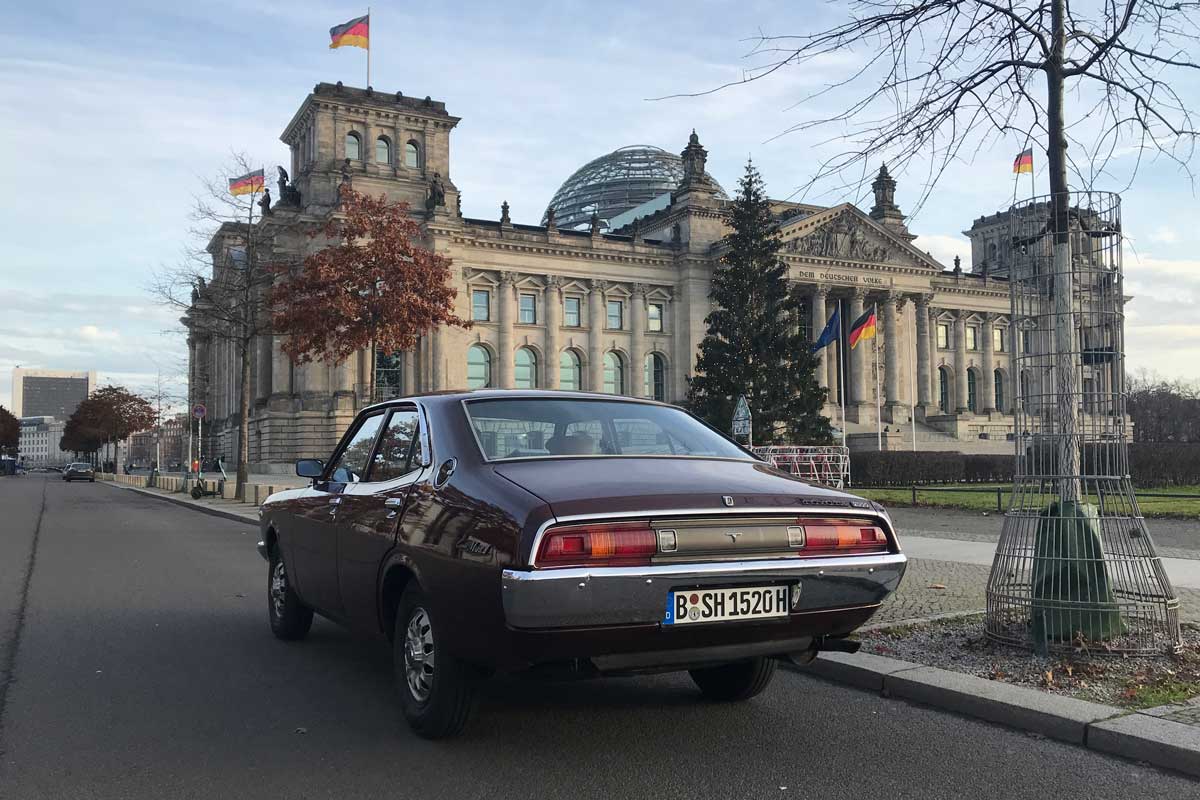The Toyota Corona Mark 2 symbolizes Toyota's path to the top of the world. Founded in 1936, the company took its cue from car manufacturers in Europe and America. They wanted to produce an affordable car in Japan that was suitable for the masses and would stand up to the competition. Designed as a middle-class model, the first Corona was introduced in 1957, still under the name "Toyopet". This model already indicated the style choices Toyota was making to pursue success. The US market determined their choices and is still essential for the success as world market leader; with more than 14% in 2020, Toyota has the second largest market share in the USA behind General Motors.
In 1968, the first Toyota Corona Mark 2 was introduced. This model was larger than the previous Corona but smaller than the top model Crown. In 1972 the second generation was introduced (X-platform). The US market is known for short model cycles, with innovations and design edits almost every year to whet customers' appetites for the latest model. Toyota sought success with reliability, an excellent price-performance ratio, and a design language that corresponded to North American tastes.
Platforms allow manufacturers to adapt models to new markets quickly. Looking to start sales in Germany in 1971, the company had to come up with compelling offers quickly. From 1972 the Toyota Corona Mark 2 was introduced as the Toyota Corona 2000. Auto, Motor und Sport published an article (No. 5, 1973, page 38 ff.) under the headline "Außenseiter" (Outsider). The article was quite critical of the new competitor. They criticized that the dimensions of the body were difficult to gauge for drivers, the soft chassis, the indirect steering, and the rough, not very dynamic engine. Where Ford broke new ground with the swing-axle rear suspension design of the Consul/Granada, the Toyota Corona Mark 2 had to make do with a classic rigid axle. "It's easier to get to the top than to stay there", Ferdinand Piëch once joked; GM, Ford, and Chrysler can tell you a thing or two about that. All the more credit must be given to Toyota's management for maintaining its top position to this day.
In Germany, Toyota offered a 2-liter engine with 89 HP (RX12). The front became wedge-shaped at the end of 1973 and differentiated itself clearly from the American model. There was also a coupé until 1976, but never a station wagon, let alone a more powerful 6-cylinder engine (MX13). The vehicles were generously equipped in Germany compared to the competition, where you had to pay for extras. Tinted windows, which were standard on the Mark 2, were often not even available as an extra.

 DE
DE  EN
EN